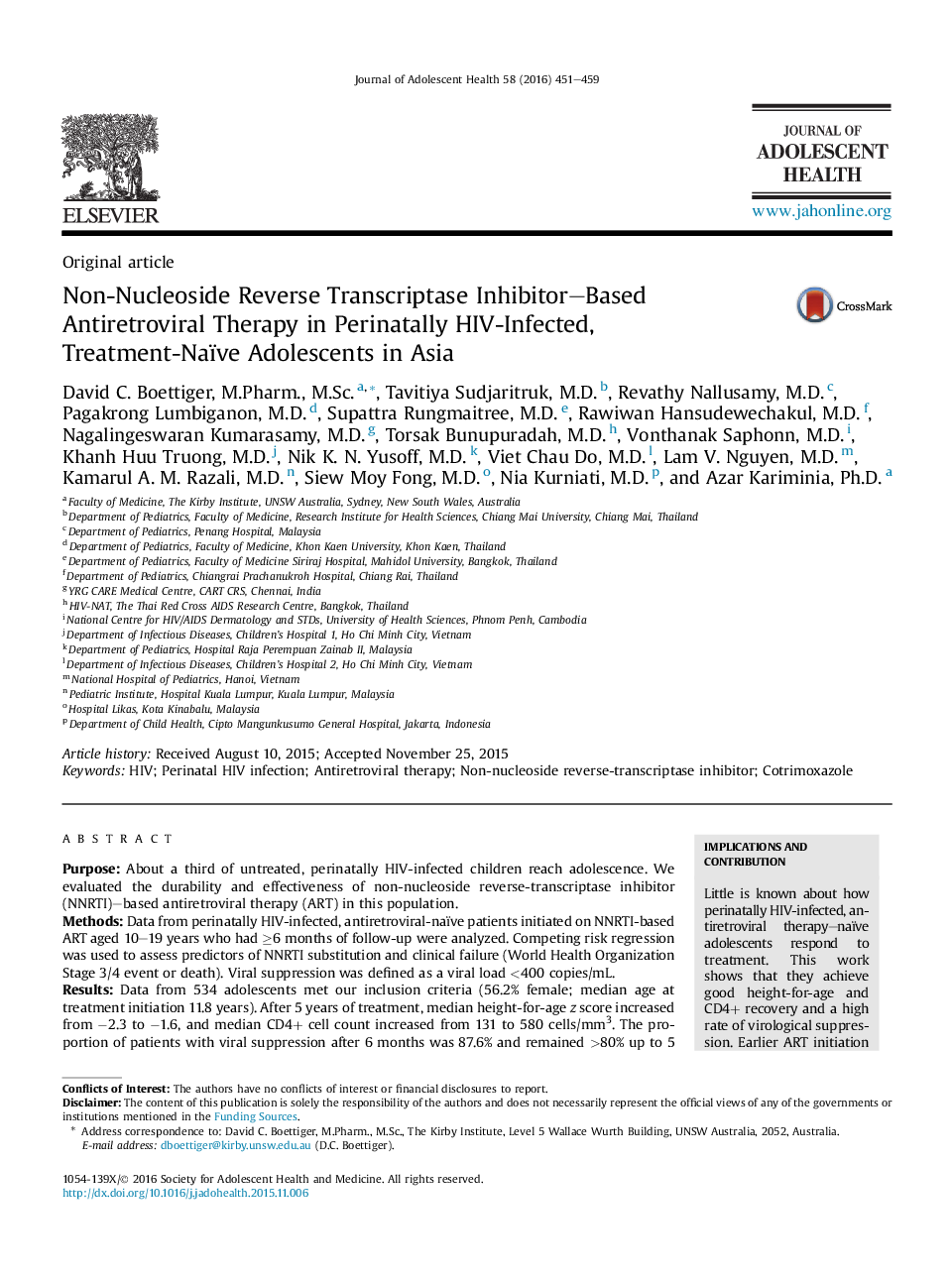| کد مقاله | کد نشریه | سال انتشار | مقاله انگلیسی | نسخه تمام متن |
|---|---|---|---|---|
| 1078203 | 950437 | 2016 | 9 صفحه PDF | دانلود رایگان |
PurposeAbout a third of untreated, perinatally HIV-infected children reach adolescence. We evaluated the durability and effectiveness of non-nucleoside reverse-transcriptase inhibitor (NNRTI)–based antiretroviral therapy (ART) in this population.MethodsData from perinatally HIV-infected, antiretroviral-naïve patients initiated on NNRTI-based ART aged 10–19 years who had ≥6 months of follow-up were analyzed. Competing risk regression was used to assess predictors of NNRTI substitution and clinical failure (World Health Organization Stage 3/4 event or death). Viral suppression was defined as a viral load <400 copies/mL.ResultsData from 534 adolescents met our inclusion criteria (56.2% female; median age at treatment initiation 11.8 years). After 5 years of treatment, median height-for-age z score increased from −2.3 to −1.6, and median CD4+ cell count increased from 131 to 580 cells/mm3. The proportion of patients with viral suppression after 6 months was 87.6% and remained >80% up to 5 years of follow-up. NNRTI substitution and clinical failure occurred at rates of 4.9 and 1.4 events per 100 patient-years, respectively. Not using cotrimoxazole prophylaxis at ART initiation was associated with NNRTI substitution (hazard ratio [HR], 1.5 vs. using; 95% confidence interval [CI] = 1.0–2.2; p = .05). Baseline CD4+ count ≤200 cells/mm3 (HR, 3.3 vs. >200; 95% CI = 1.2–8.9; p = .02) and not using cotrimoxazole prophylaxis at ART initiation (HR, 2.1 vs. using; 95% CI = 1.0–4.6; p = .05) were both associated with clinical failure.ConclusionsDespite late ART initiation, adolescents achieved good rates of catch-up growth, CD4+ count recovery, and virological suppression. Earlier ART initiation and routine cotrimoxazole prophylaxis in this population may help to reduce current rates of NNRTI substitution and clinical failure.
Journal: Journal of Adolescent Health - Volume 58, Issue 4, April 2016, Pages 451–459
